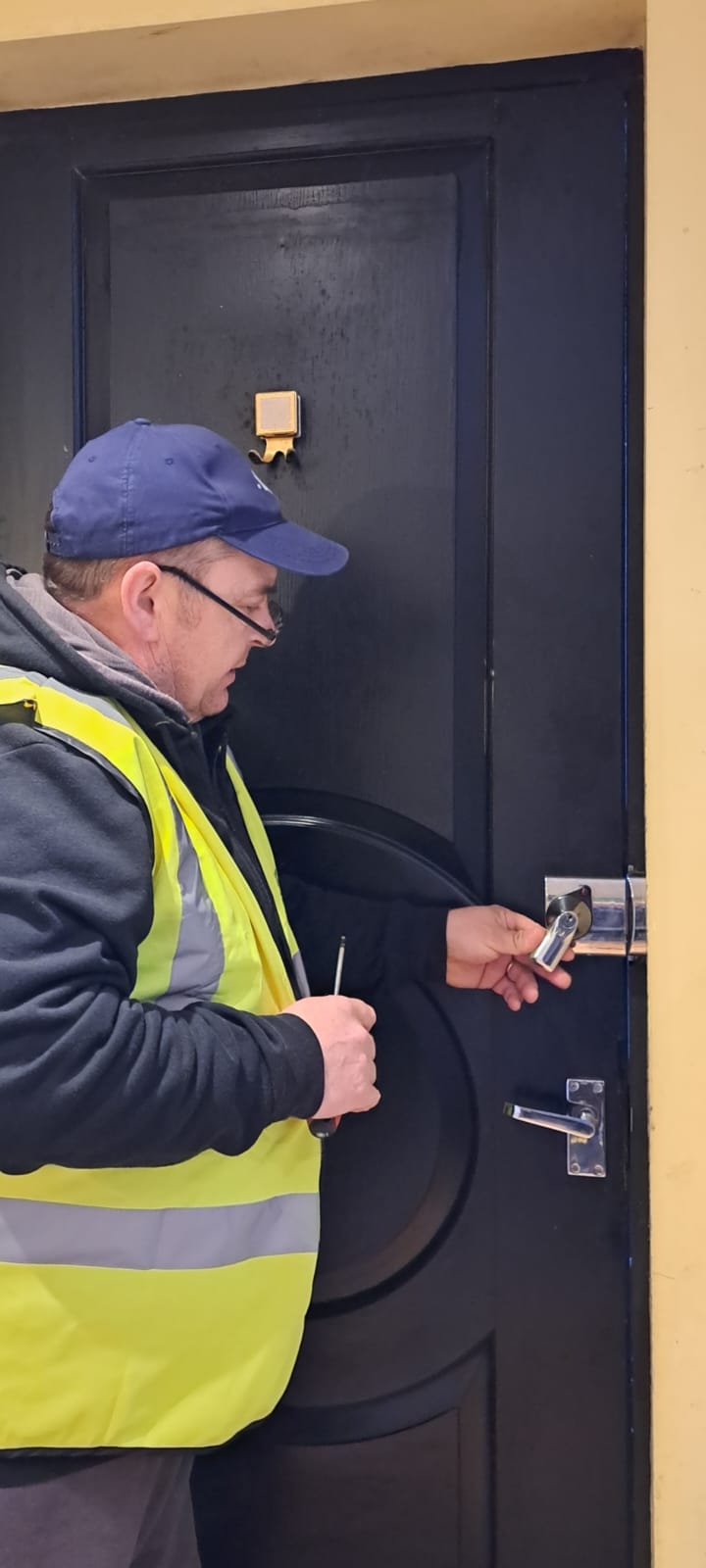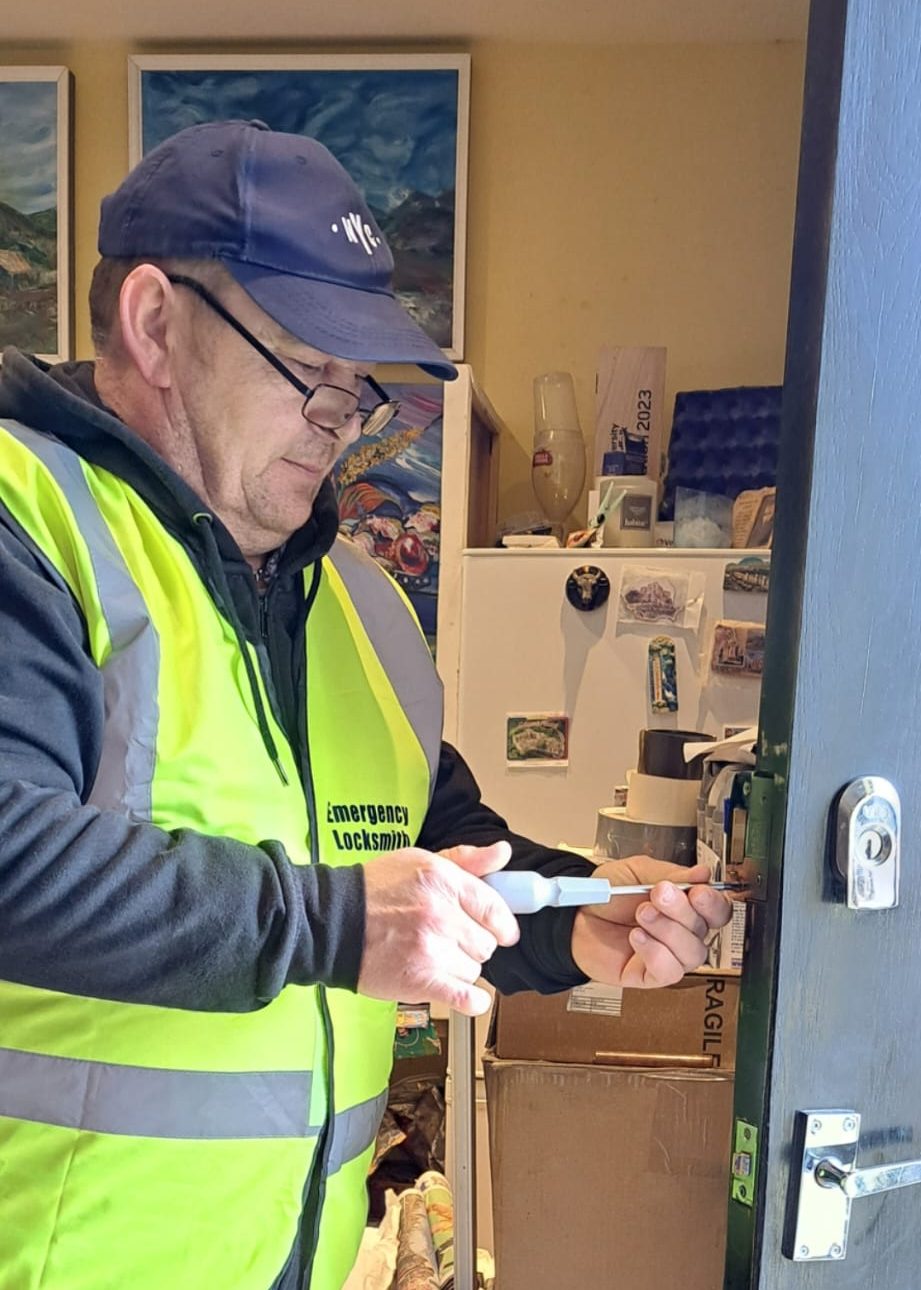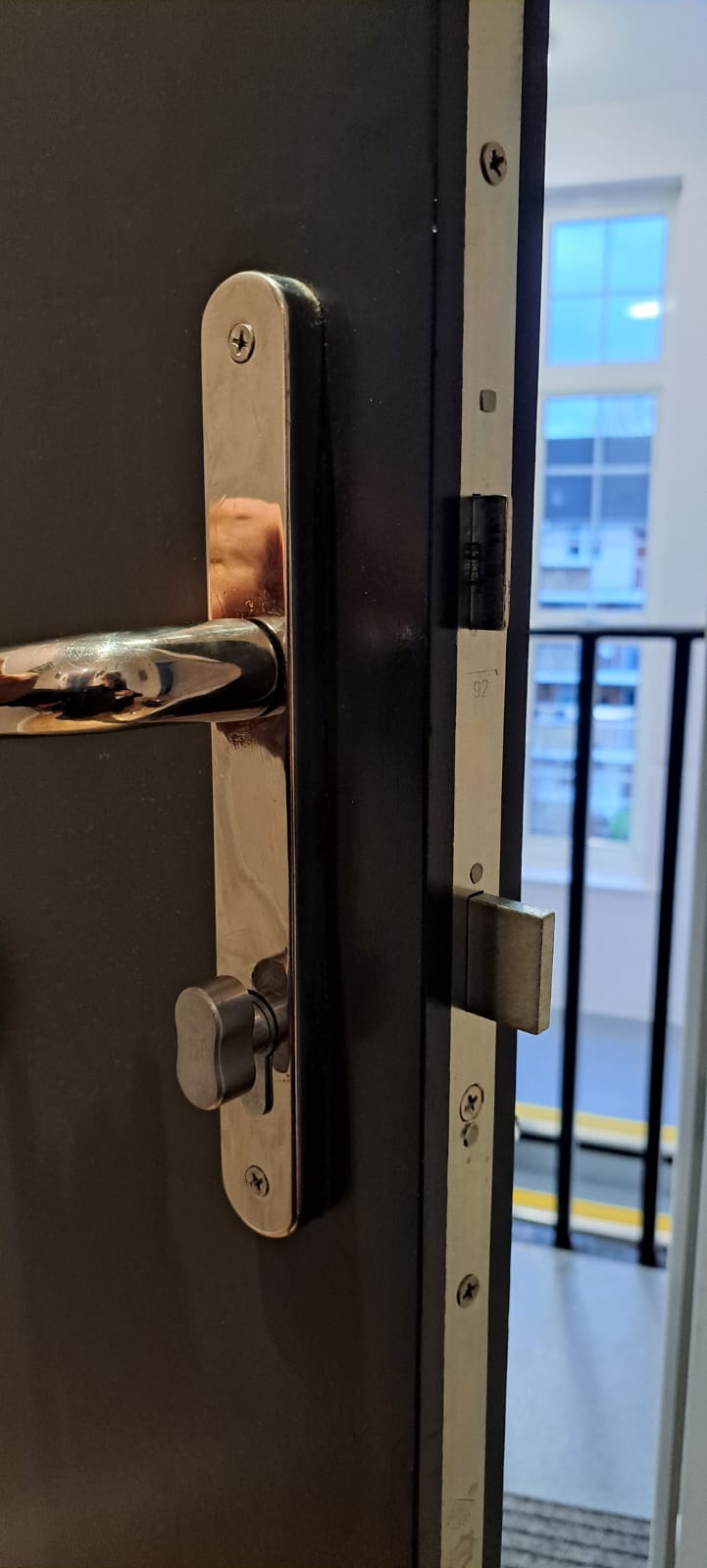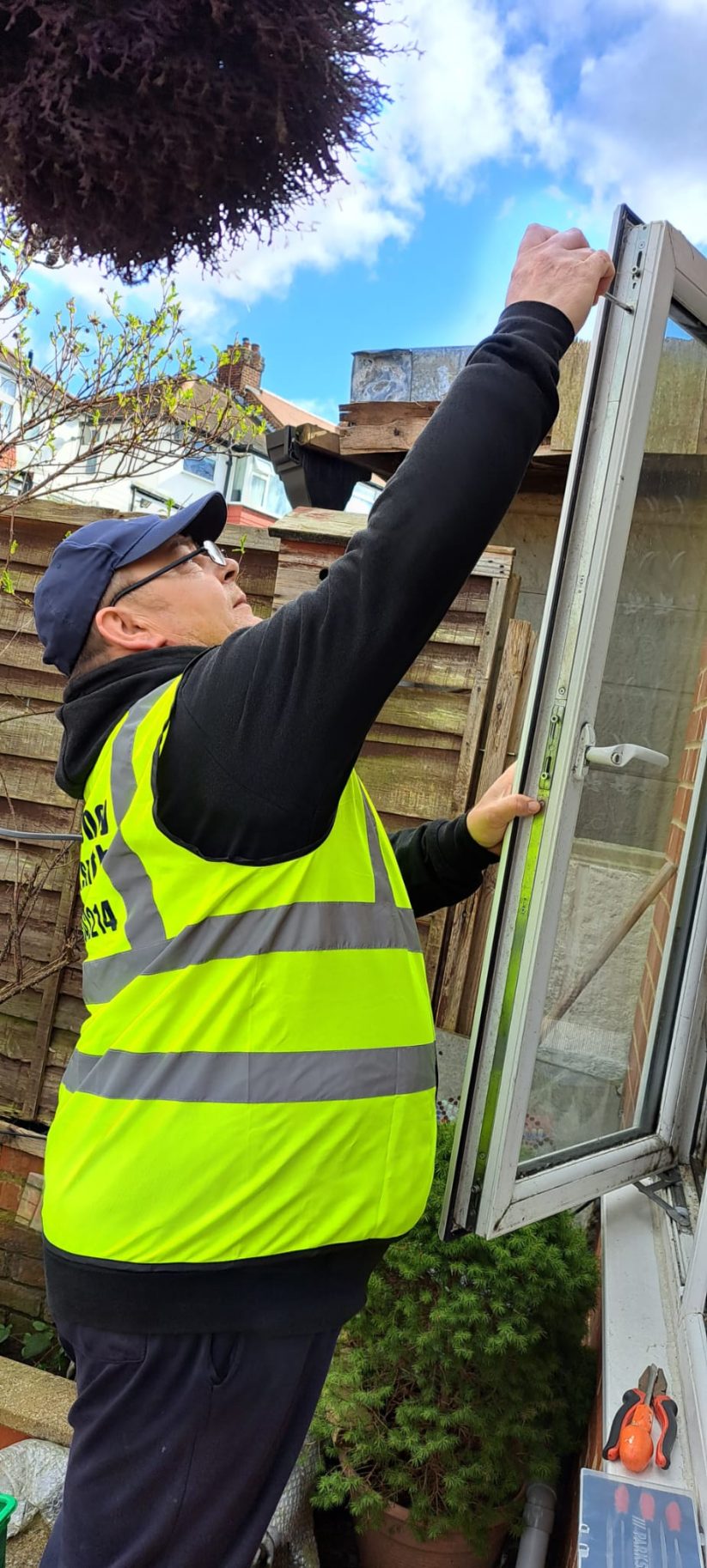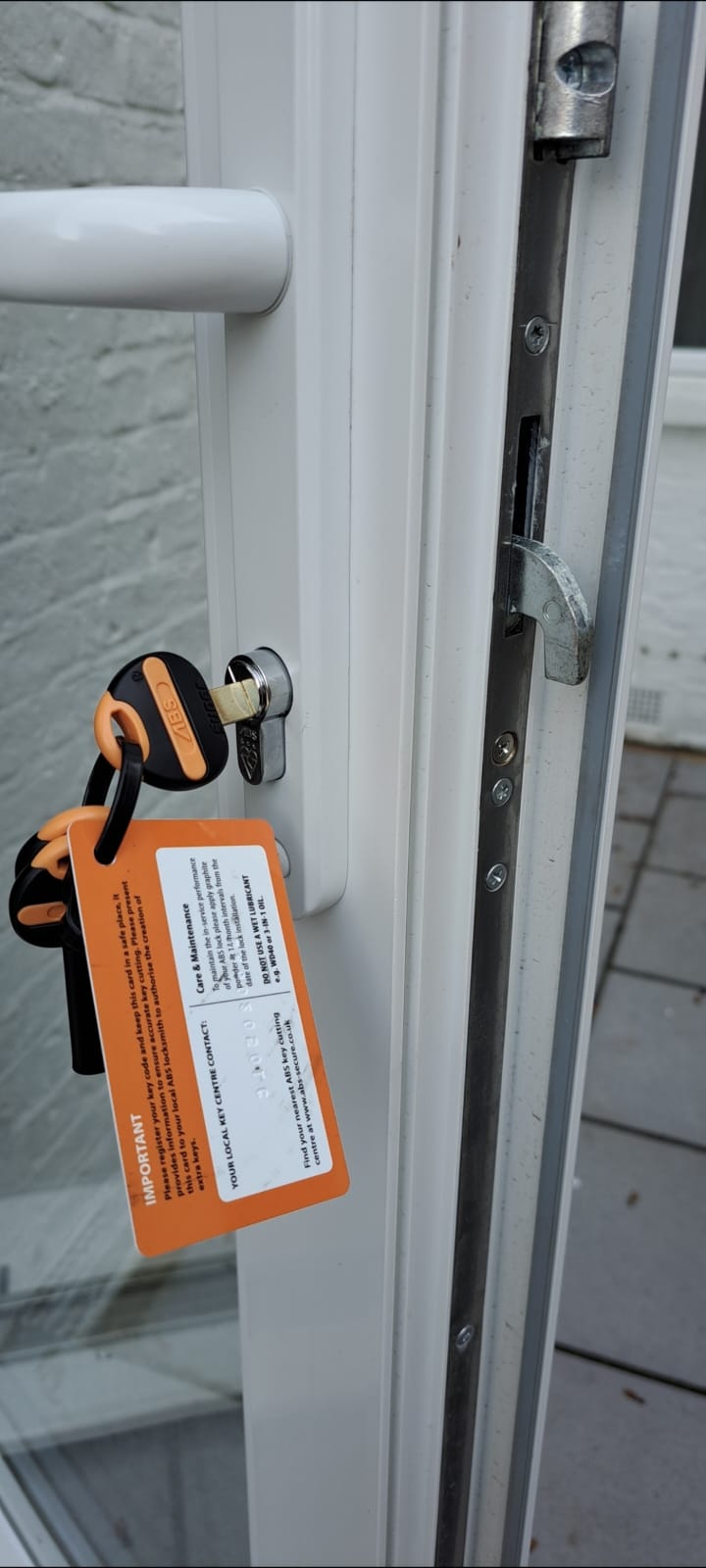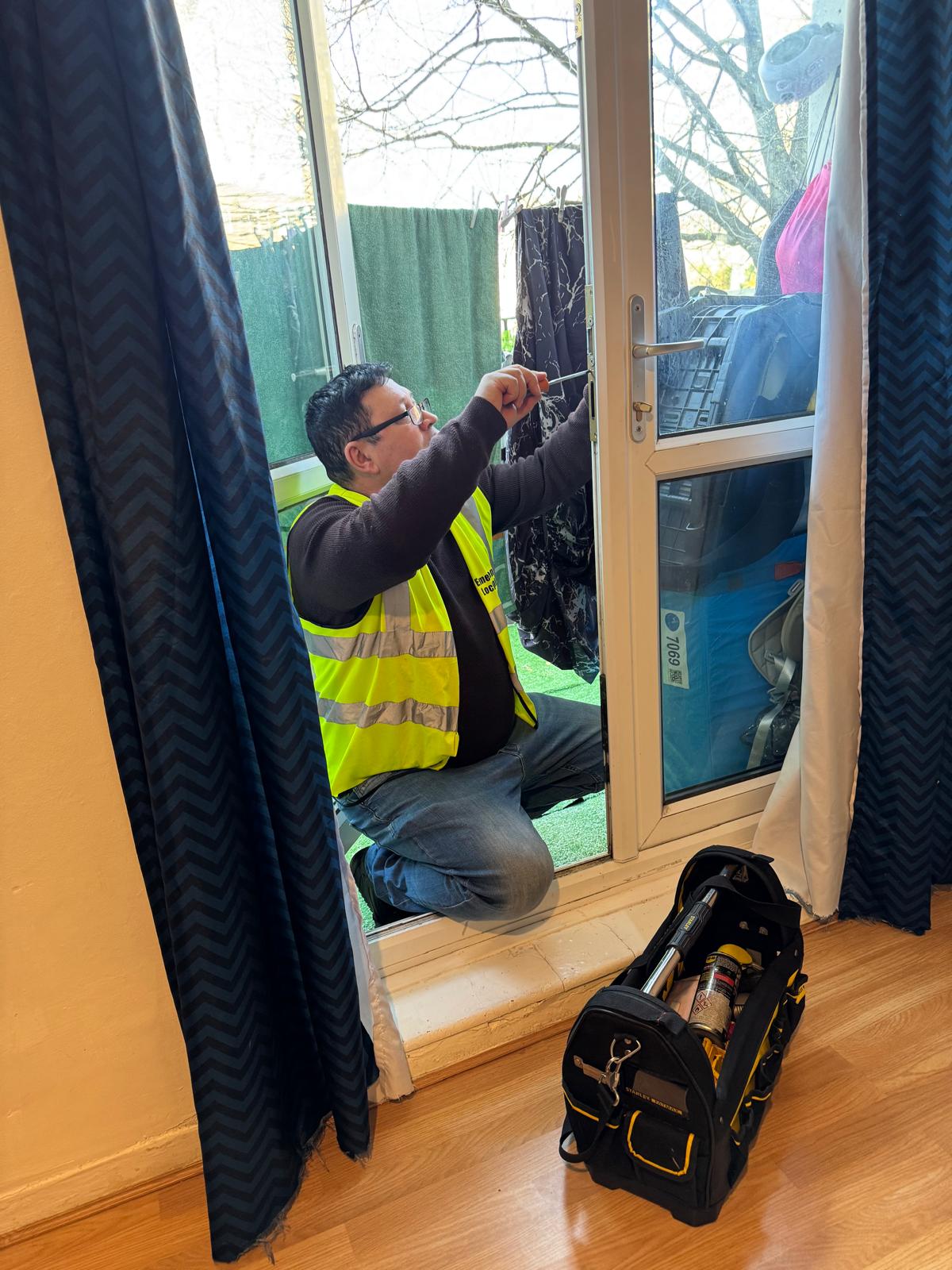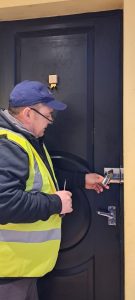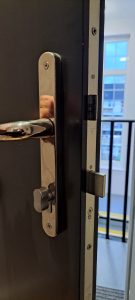| 7 Types of Secure Locks You Should Upgrade Your Doors To (House & Commercial) |
Upgrading your door locks is one of the soundest investments you can make in your home or business. But with so many lock types, brands, and different technologies on the market, choosing the right lock isn’t easy.
This guide will look at the seven most secure locks for homes and businesses, and explain how they work, what makes them special, and which situations they’re best suited for.
Why outdated locks are a security risk
Nearly a quarter of all UK domestic break-ins involved damage to a door or window lock. However, modern locks are about more than fortifying your property. Research from Nottingham Trent University shows that when combined with internal and external locks on a timer, they offer almost 50 times more protection than no security at all.
Here’s why older or outdated locks put domestic and commercial properties at risk.
- Susceptibility to picking, bumping, drilling, and other techniques employed by modern thieves.
- Older locks suffer from mechanical wear, corrosion, and weakened components, making them easier to manipulate over time.
- Newer locks often include anti-snap, anti-pick, and anti-drill technologies, as well as reinforced strike plates and multi-point locking systems.
- Relying on outdated locks can give homeowners a dangerous false sense of security, leading to complacency and neglect of other security measures.
Ok, so now that we understand the problems with outdated locks, it’s time to look at the seven types of secure locks for a home or commercial door upgrade.

1. Banham Locks: The Quintessential British Fortress
In 1926, William Banham’s wife’s dress shop was burgled. In response, Banham pioneered the automatic latch bolt lock and offered a then-£25 reward to anyone who could pick his invention. There is no record of anyone claiming the reward.
Just five years later, these quintessential British locks were used to secure London’s Savoy Hotel, with the brand now synonymous with London’s finest homes.
Key features
- Molten Metal Craftsmanship: Cast from smelted steel bars in UK forges, with lock cases hot-stamped for density.
- Split-Finish Design: Allows for different interior and exterior finishes (e.g., polished brass outside, satin nickel inside) in heritage homes.
- Key Registry System: Only 12 approved locksmiths nationwide are authorised to duplicate keys, requiring owner ID verification.
Pros and Cons
Pros:
- Extremely high security, hard to pick or force open.
- Recognised by insurers, often required for premium coverage.
- Stylish, with a choice of finishes to suit any property.
Cons:
- Higher price point than standard locks.
- Installation usually requires a professional.
- Limited key duplication can be inconvenient if you need spares.
Best for:
These are ideal for main entrance doors in high-value homes, apartments, and commercial properties where both security and appearance matter. For example, they are suitable for Grade I/II listed buildings that need discreet security that is architecturally sympathetic.
2. Ingersoll SC71
Developed in 1969 for NATO installations, the SC71’s 10-lever mechanism was tested by the US government with 2000°F furnace blasts and dynamite attacks. After Con Edison adopted them, tool thefts in NYC dropped from $450,000 to $500 per year.
Key features
- Shackle Armour: Laminated steel plates brazed with copper, case-hardened to resist 4-tonne hydraulic jack attacks.
- Anti-Reach Peg: A steel pin embeds into the door frame, preventing “through-the-letterbox” latch manipulation.
- Key Coding: Each key has a 6-digit identifier, with master systems capable of supporting over 1,000 unique user hierarchies.
Pros and Cons
Pros:
- Exceptionally hard to pick or drill.
- Double-locking feature for extra defence against “reach-through” attacks.
- Highly durable and weather-resistant.
Cons:
- Premium price tag.
- Bulky design may not suit all doors.
- Not all models meet every insurance standard; the SC71 is often paired with a secondary BS3621-certified mortice deadlock to meet compliance.
Best for:
It is perfect for front doors in high-crime areas, businesses, and anyone who wants maximum resistance to forced entry. It is also commonly used in critical infrastructure sites like power plants and military bases that require MIL-SPEC compliance.
3. Mul-T-Lock Locks
Mul-T-Lock is a global leader in high-security locking solutions, trusted by professionals, government agencies, and commercial enterprises. Its locks are famous for their advanced pin technology and robust, tamper-resistant construction. Thanks to its telescopic pin-in-pin system, which nests two pins inside two larger pins, it creates 1.2 million key combinations.
Key features
- Advanced pin tech: Telescopic pin system and multiple rows of pins for extreme pick resistance
- Tamper-proof: Hardened steel body resists drilling and cutting, while making the lock weather resistant.
- Patented key control: Keys can only be duplicated by authorised dealers.
Pros and Cons
Pros:
- Extremely difficult to pick, bump, or drill.
- Master key systems simplify access management in large buildings.
- Durable and suitable for harsh environments.
Cons:
- Higher cost than standard locks.
- Installation may require a specialist.
- Overkill for low-risk residential areas.
Best for:
Ideal for commercial buildings, industrial sites, storage units, and high-risk residential properties.
4. Mortice Locks
Mortice locks are fitted into a pocket (mortice) within the door itself, making them exceptionally strong and discreet. They’re a staple in both homes and commercial buildings thanks to their durability and high resistance to forced entry. While they were initially handcrafted to secure 18th-century aristocratic homes, modern mortice locks now meet the BS 3621 standards.
Key features
- Multi-Point Engagement: Top-tier models like ERA Fortress lock at 3 points (center, top, bottom).
- Discreet Armoring: Chubb’s detainer mechanism uses rotating discs instead of levers, foiling lock-picking hooks.
- Fire Ratings: Some variants survive 1-hour fire tests, crucial for apartment block fire doors.
Pros and Cons
Pros:
- Very hard to force open due to deep installation.
- Aesthetically pleasing, with most hardware hidden.
- Long-lasting and low maintenance.
Cons:
- More complex and costly installation.
- Not easily retrofitted to all doors.
- High-quality models can be expensive.
Best for:
Good for external doors in homes, apartments, and commercial properties, especially for situations where insurance compliance is required.
5. Chubb Locks
Chubb is an historic and well-known brand famous for pioneering the detector lock and setting standards in both mechanical and electronic security. Their product line includes deadlocks, mortice locks, keyless entry, and advanced access control.
Key features:
- Thermal Camouflage: Aluminium-bronze alloys resist oxyacetylene cutting torches.
- Advanced Security: Advanced anti-pick pins and anti-drill plates.
- Insurance compliant: Some models are fire-rated and insurance-approved.
Pros and Cons
Pros:
- Top-tier anti-tamper and anti-pick features.
- Wide range of products for different needs.
- Trusted by banks, government, and high-security facilities.
Cons:
- Premium pricing, especially for advanced models.
- Some features may be more than needed for basic home use.
- Limited smart lock options.
Best for
Excellent for both homes and businesses that need a blend of traditional strength and modern electronic access control. Particularly suitable for heritage buildings, banks, and fire safety-critical environments.
6. Deadlocks
Deadlocks, also frequently called deadbolts, are a classic security upgrade for any door. Unlike spring-latch locks, they require a key to lock and unlock from both sides, which makes them highly resistant to tampering or forced entry.
Key features
- Bolt Geometry: Modern deadbolts like Abloy Protec2 use rotating discs with 10μm tolerances—finer than human hair.
- Anti-Jimmy Collars: Tungsten carbide plates around bolts resist crowbars at 1,200°C.
- Dual-Cylinder Options: Some models allow keyless egress during fires.
Pros and Cons
Pros:
- Extremely strong against forced entry.
- Simple, reliable, and long-lasting.
- Widely available and often insurance-approved.
Cons:
- Requires manual locking/unlocking, which can be inconvenient.
- Double-cylinder models can pose a safety risk in emergencies if the key is misplaced
- Installation may require professional fitting.
Best for
Ideal for external doors in homes and businesses, and for vans or storage units that need extra security.
7. Smart Locks
Smart locks are the newest evolution in door security, offering keyless entry, remote control, and integration with smart home or business systems. They’re increasingly popular for both residential and commercial use, providing flexibility and advanced access management.
To give you an idea of what’s possible with these innovative locks, Yale’s 2025 Real Living series uses AI to learn resident patterns. For example, if you normally unlock at 6:30pm but an attempt happens at 2am, it triggers CCTV and sends you alerts.
Key features
- Futuristic tech: Keyless entry via smartphone, keypad, or biometric scan, alongside activity logs and monitoring.
- Control: Remote locking/unlocking and real-time alerts with integration with security cameras and alarms also a typical features.
- Convenience: Temporary or scheduled access codes for guests or staff.
Pros and Cons
Pros:
- Ultimate convenience because there is no need for physical keys.
- Remote access and real-time monitoring.
- Easy to manage multiple users and temporary access.
Cons:
- Dependent on batteries and Wi-Fi, which could malfunction if power or internet fails.
- Vulnerable to hacking if not properly secured.
- Higher upfront cost and may need professional installation.
Best for:
Perfect for tech-forward homes, offices, rental properties, and businesses needing flexible, remote access control.
Final thoughts
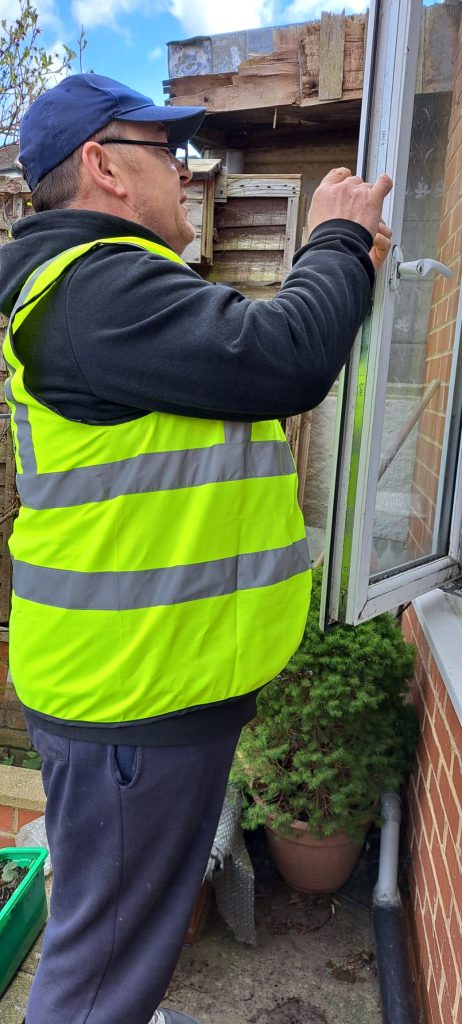
There are a lot of factors to consider when choosing secure locks for a home or commercial door upgrade. While keeping intruders out of your home or business is the most important thing, there are other things to consider, like convenience, aesthetics, and insurance compliance.
Before upgrading, consider your property’s risk level, insurance requirements, and how much you value convenience versus traditional security. And always use a professional locksmith for installation to ensure your new lock is as secure as it’s designed to be.

